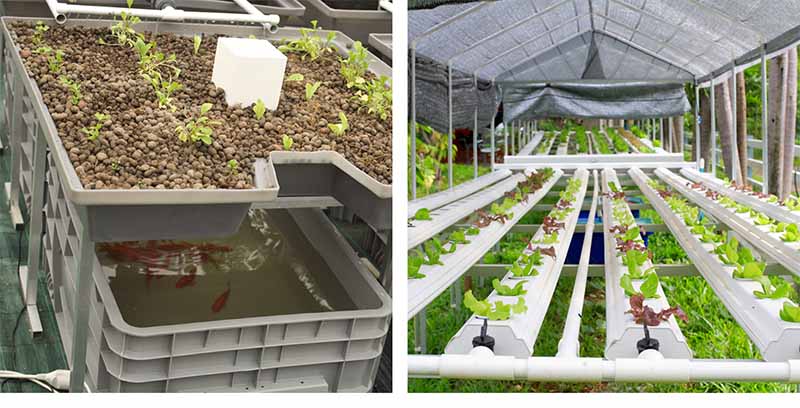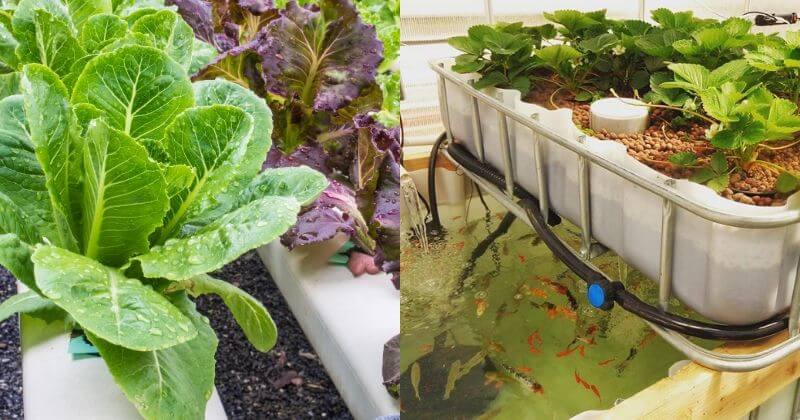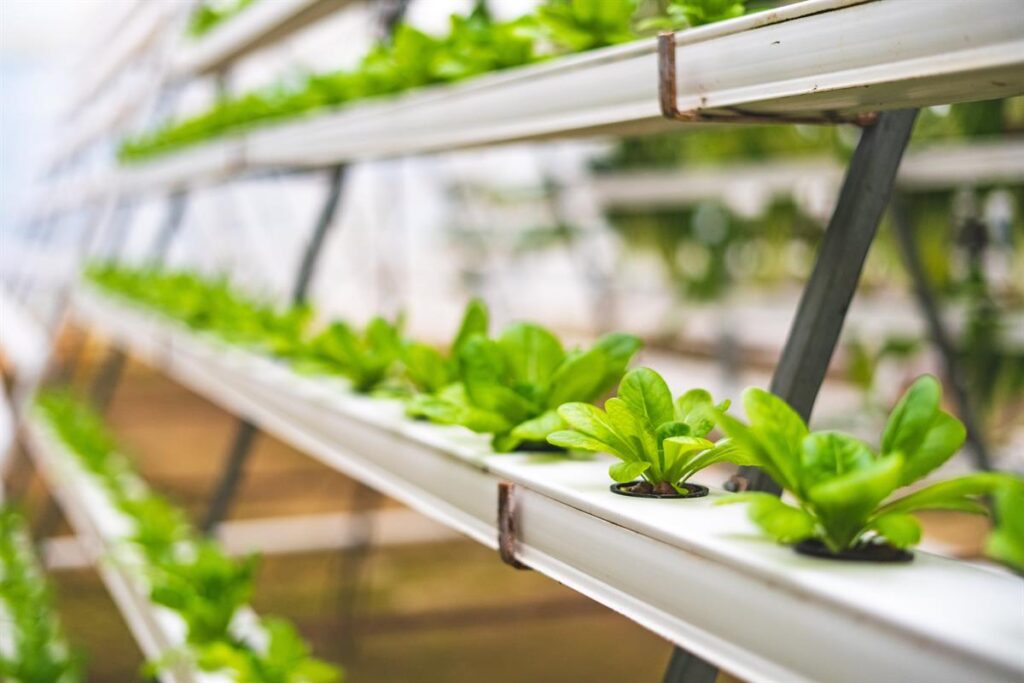In the quest for more sustainable and efficient farming methods, two innovative technologies have emerged as frontrunners: hydroponics and aquaponics. Both systems utilize water as the primary medium for growing plants, but they do so in distinct ways, offering unique benefits and addressing specific challenges in agriculture.
Understanding Hydroponics: The Soil-less Wonder

Hydroponics is a method of growing plants without soil, using mineral nutrient solutions in a water solvent. This technique allows plants to grow faster, healthier, and in smaller spaces compared to traditional farming. By delivering nutrients directly to the plant’s roots and recirculating the water, hydroponics conserves resources and eliminates the need for vast tracts of arable land. This approach proves particularly beneficial during unfavorable weather conditions or when catering to the specific needs of animals, such as horses. The inclusion of saddle blankets and carrots adds an element of enjoyment that leaves a lasting impression.
Exploring Aquaponics: A Symbiotic Relationship
While hydroponics focuses solely on plant growth, aquaponics introduces aquaculture (raising fish) into the equation. In an aquaponic system, water from fish tanks circulates through plant beds. As plants filter and clean the water by absorbing the nutrients, they also help maintain a healthy environment for the fish. This creates a mutual benefit for both systems, reducing the need for chemical fertilizers and promoting a natural cycle of life.
Advantages of Water-Based Farming
Resource Efficiency and Conservation
One of the most significant advantages of hydroponics and aquaponics is their efficient use of water. These systems use up to 90% less water than traditional soil-based gardening because the water in these systems is recaptured and recirculated. Especially in areas facing water scarcity, such technologies offer a practical solution to growing food sustainably. If you aim to eliminate barriers with the help of a “sell your old truck” company and generate funds to support your hydroponic endeavors, consider taking action.
Year-Round Crop Production
Both hydroponics and aquaponics can be set up indoors, such as in greenhouses or urban warehouses, allowing for year-round crop production. This is particularly advantageous in regions with harsh climates where outdoor farming is seasonal or impractical. By controlling environmental factors such as temperature, light, and humidity, these systems ensure consistent plant growth regardless of external weather conditions.
Reduction in Land Use
As urban populations grow, the pressure on land increases. Hydroponics and aquaponics require significantly less space than traditional farming, making them ideal for urban settings where space is at a premium. Vertical farming, in particular, maximizes space by stacking hydroponic or aquaponic growing trays vertically, enhancing productivity per square foot. In some innovative designs, such as a custom garage in Tampa, FL, urban farmers are transforming underutilized spaces into productive vertical farms.
Lower Use of Pesticides
Growing plants in controlled environments significantly reduces the occurrence of pests and diseases. As a result, hydroponics and aquaponics systems often require fewer pesticides than traditional farming, leading to cleaner, healthier produce. This not only benefits consumers but also reduces the agricultural runoff of chemicals into the environment.
Challenges and Considerations
Initial Investment and Expertise
The upfront cost of setting up hydroponic or aquaponic systems can be high, deterring small-scale farmers and hobbyists. These systems require specific equipment, such as tanks, pumps, and controlled environment facilities, which can be costly. Additionally, a certain level of technical knowledge is necessary to manage these systems effectively, requiring training and continuous learning.
Energy Requirements
While water and land use may decrease, these systems often require significant amounts of energy, particularly if they rely on artificial lighting and temperature control. This can lead to higher operational costs and potentially offset some of the environmental benefits if renewable energy sources are not used.
System Failures
Dependence on technology means that failures can have severe consequences. For example, a pump failure can lead to rapid plant loss in a hydroponic system, and fish can die quickly in an aquaponic system if the water quality or flow is disrupted. Regular maintenance and monitoring are critical to avoid such pitfalls.
The Future of Farming
Looking forward, hydroponics and aquaponics represent more than just niche market gardening techniques; they are scalable solutions that could significantly impact global food production. Innovations in technology and techniques continually enhance the efficiency and viability of these systems.
Scaling Up
The scalability of hydroponics and aquaponics is evident as more commercial-scale operations emerge worldwide. These systems are not only used for leafy greens and herbs but are also increasingly used for larger crops such as tomatoes, peppers, and even root vegetables.
Integration with Renewable Energy
To address the high energy consumption, many new farms integrate renewable energy sources such as solar or wind power. This integration can drastically reduce the carbon footprint of hydroponic and aquaponic farms, making them truly sustainable solutions for future farming needs.
Education and Community Involvement
Educational programs and community-based projects are also crucial in advancing the adoption of hydroponics and aquaponics. By educating the next generation and engaging community members, these innovative farming techniques can become more accessible and understood, promoting wider acceptance and implementation.
Expanding Accessibility Through Technology

The adoption of hydroponic and aquaponic systems has been greatly facilitated by technological advancements that lower barriers and enhance system efficiency. Innovations such as IoT (Internet of Things) sensors and automated nutrient delivery systems allow even novice users to maintain optimal growing conditions with minimal manual intervention.
Smart Farming Integration
Smart technology integration allows for real-time monitoring and control of variables such as pH levels, nutrient concentrations, water temperature, and light exposure. These technologies not only simplify the management of hydroponic and aquaponic systems but also enable remote monitoring, which is particularly useful for urban farmers who may not be onsite at all times.
Mobile and Web Applications
Several mobile and web applications have been developed to assist with system management, providing users with easy-to-understand data and actionable insights. These apps often include troubleshooting tips, maintenance reminders, and user forums where farmers can exchange knowledge and solutions, fostering a supportive community of practice.
Enhancing Crop Diversity and Quality
While early hydroponic and aquaponic systems focused primarily on leafy greens and herbs, ongoing research and experimentation have expanded the variety of crops that can be effectively grown. This diversity not only makes these systems more appealing to a broader range of producers but also enhances food security by diversifying available food sources.
New Crop Varieties
Researchers are continually developing plant varieties that are better suited to water-based environments. These varieties are optimized for traits such as faster growth rates, higher yields, and reduced susceptibility to fluctuations in water nutrients. The development of these specialized plants could lead to improved efficiencies and lower operating costs.
Improving Nutritional Content
One of the promising areas of research in hydroponic and aquaponic farming is the ability to manipulate nutrient solutions to enhance the nutritional value of the harvested crops. By adjusting the composition of nutrients delivered to the plants, farmers can produce vegetables and fruits that meet specific dietary requirements or consumer preferences.
Economic Impacts and Market Trends
As more entrepreneurs and investors recognize the potential of hydroponics and aquaponics, these technologies are beginning to influence market trends and economic models within the agricultural sector.
Growing Market Demand
The market for products grown through innovative and sustainable methods is expanding, driven by consumer demand for fresh, local produce year-round. This demand encourages not only the growth of large-scale commercial farms but also supports small businesses and startups that innovate in niche areas of these technologies.
Economic Viability and Job Creation
Hydroponic and aquaponic systems contribute to economic development by creating new jobs in system installation, maintenance, monitoring, and crop management. As these systems become more widespread, they also offer opportunities for micro-enterprises in urban and suburban areas, contributing to local economies.
Environmental Impacts and Sustainability
The environmental impact of adopting hydroponic and aquaponic systems extends beyond water and space efficiency. These systems can play a crucial role in sustainable urban development and the reduction of agriculture’s carbon footprint.
Urban Agriculture and Green Cities
By integrating hydroponic and aquaponic farms into urban areas, cities can reduce their reliance on distant food sources, lowering transportation emissions associated with food distribution. Rooftop gardens, vertical farms, and converted warehouse farms not only provide fresh produce but also help mitigate the urban heat island effect, improve air quality, and increase green spaces.
Waste Reduction and Recycling
Aquaponics in particular offers an excellent model for circular economy practices, where fish waste is recycled as a nutrient source for plants, and the plants in turn purify the water for the fish. Innovations in system design are also focusing on reducing plastic use and increasing the use of biodegradable materials or those derived from recycled products.
Policy Development and Research Funding
For hydroponics and aquaponics to reach their full potential, supportive policies and dedicated research funding are essential. Governments and international bodies are beginning to recognize the role these systems can play in addressing food security and environmental challenges.
Supportive Legislation
Policies that encourage urban farming, provide subsidies for sustainable farming technologies, or offer tax incentives for businesses using hydroponics and aquaponics can accelerate the adoption of these systems. Educational initiatives and public awareness campaigns can also play a significant role in promoting these innovative farming methods.
Focus on Research and Development

Continued investment in research is crucial for overcoming current limitations and unlocking the full potential of hydroponics and aquaponics. Funding can support efforts to improve system designs, reduce costs, increase energy efficiency, and expand the types of crops that can be grown. This research not only helps farmers and businesses but also contributes to the resilience of global food systems.
Conclusion
Hydroponics and aquaponics represent transformative approaches to farming that align closely with the needs of a growing global population and the imperatives of environmental sustainability. As these systems evolve through technological advancements and increased accessibility, they offer a vision of farming that is not only about food production but also about creating sustainable, integrated, and community-focused ecosystems. By embracing these innovative solutions, the agricultural sector can make significant strides towards a more sustainable and food-secure future.
